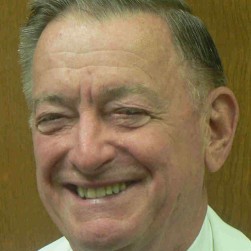Last updated 10/11/2021
Since retirement, Steb has remained an active member of the medical staff at the USC University Hospital and Norris Medical Center, performing consultative duty. He also continues to teach medical students and pathology residents at USC. Steb volunteers his time to the Awards Committee of the American Society for Clinical Pathology and has served on the board of the USC Retired Faculty Association for three years and is currently the RFA’s President. In his free time, he tries to stay active with tennis, golf, and gardening.
Steb Chandor came to USC in 1969, working at LAC-USC as Chief of Immunopathology after serving three years in the Army Medical Corps at Tripler Army Medical Center. He then left USC in 1976 to take faculty positions at two other medical schools. He served as Associate Professor of Pathology with tenure at the SUNY Stony Brook Campus and was chief of the clinical laboratories of the University Hospital. Steb then went to Marshall University in Huntington, West Virginia, as Chair of Pathology and Associate Dean of Clinical Affairs, in addition to serving as President of the West Virginia Society of Pathologists. However, in 1991 he returned as Professor and Director of Laboratories at the USC University Hospital. While working at USC he became involved with both national and academic medical associations, serving as President of the American Society for Clinical Pathology along with serving on the Administrative Board of the Council of Academic Societies of the AAMC. In addition to this, he also served for several years as State and Regional Commissioner of the Laboratory Accreditation arm of the College of American Pathologists. In addition to his service to these organizations, he received two Department of Pathology teaching awards and also served as Vice-Chairman and chair of the Academic Review Committee.
“Eleanor Roosevelt once said, ‘Yesterday is history, tomorrow is a mystery, and today is a gift; that is why it is called the present’.” Stebbins Chandor, 2007
